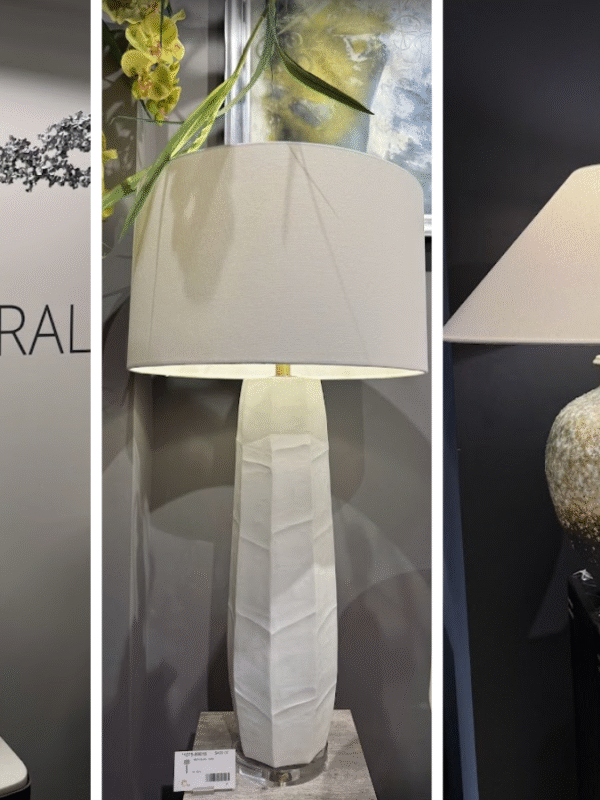During Fall High Point Market – which is always a great opportunity for face time with retailers, designers, manufacturers, and sales reps – there were a lot of rumblings over evolving business models.
In tough economic times, understandably everyone in the industry needs to maintain profitability or, at the very least, make every attempt to stay afloat. As a result, the sales channel waters are becoming muddied as many manufacturers expand their list of target customers. The proliferation of “Join our designer trade program” messaging on social media and through email promotions to market attendees was evidence of an increasingly more assertive approach than in the past. Similarly, there was an escalation of atypical customers visiting market – home builders, interior designers, contractors, real estate agents masquerading as interior designers, and consumers – hoping to score generous discounts by circumventing the traditional channels of selling through showrooms.
What makes it a “dirty little secret” is not that this shift has been happening, but the denial that it is happening. For every manufacturer that does not sell direct to designers or other channels typically serviced by lighting showrooms, retailers will tell you there are three more who do. Obviously, this is not a “new” problem – it has been whispered among lighting showrooms over the past 10 years or more – but those dissenting voices are now getting louder.
Fortunately, the consumers who visited High Point Market exhibitors looking for a deal were turned away, manufacturers told me. However, the lines blur when other trade members ask for and – from what I’ve heard – often receive terms normally reserved for stocking dealers.
To clarify: selling to interior designers at a discount is not the problem. Manufacturers selling to designers, builders and contractors at the lighting showroom’s cost is. I have heard from enough lighting retailers at market – and in the days afterwards – that sales have become much more challenging in this environment of trade professionals going direct to a manufacturer and getting products at dealer cost.
As one showroom manager informed me, “There are designers and real estate agents out there who will tell their customers, ‘I can get [the lighting] for you at my cost’ and that automatically makes it seem like lighting showrooms are overcharging. That customer doesn’t know that the [trade professional] is probably making up the difference from other areas in the project like fees. We’ve also had designers who are getting the lighting from manufacturers at our cost and are then marking it up to what we would sell it for or more.” In either scenario, the lighting showroom misses out on that sale.
The concept of showrooming – consumers visiting a lighting showroom to see various lighting products in person with the intention of purchasing for less online – has just ratcheted up a notch.
Another showroom buyer told me that a designer recently called the store to ask, “‘We have most of our customers’ lights selected, but they’re stuck in a few places. Can we come in and use your showroom?’ I said, ‘Absolutely’ — thinking she’d get those few fixtures through me. They spent three or four hours in our store, looking at our displays, using our table, paging through catalogs and we never heard from that designer again.” While consumers shopping in-store and buying online is no longer new, having that practice perpetrated by local trade professionals stings just a bit more.
The showroom buyer went on to say that some design firms are stipulating in their contracts that any lighting has to be supplied through them. “Can you imagine if a showroom tried to get a customer to sign something like that when we started the lighting plan for their house? They’re not building relationships with the customer; they’re not worried about repeat business. Showrooms, on the other hand, are trying to build foundations of service, quality, and reliability,” the buyer said.
Meanwhile, lighting showrooms are still fighting the longtime perception battle that they are more expensive than other retail channels. When other trade professionals tell consumers they can get them the lighting at cost, it further erodes any desire for consumers to purchase from showrooms. It was just this past week after High Point Market that I’ve heard about real estate agents approaching manufacturers and misrepresenting themselves as designers with the goal of getting dealer pricing so they can offer potential homeowners upgraded lighting fixtures at a markup — once again, cutting out the lighting showroom.
There are a few workable solutions that could mitigate this problem, showrooms tell me. Of course, number one is for manufacturers to uphold IMAP unilaterally. The second is for manufacturers to return to selling designers at a higher price than showroom cost; and a third option is to not set up trade accounts in areas where there is adequate distribution for the sought-after lines already sold through showrooms.
Another sticking point is putting limits on markup. One showroom manager remarked, “We’ve had reps say they want to run a design business through us but tell us we can’t put more than a 1.25 markup on it. So, manufacturers are making their money, and sales reps are making their money, but lighting showrooms are not supposed to make their profit? That sounds like the manufacturer is saying to showrooms, ‘If you want this designer business, you can sell it to the designer and make very little profit on it. If not, we’ll sell it direct.’”
It’s easy to understand why lighting showrooms feel like they are at a disadvantage when compared to trade accounts who are receiving the same exact pricing. Showrooms are the ones spending on warehousing and deliveries, plus negotiating with manufacturers for displays and placing larger orders than they are comfortable with to qualify for galleries or freight promotions.
I’d like to see the industry address these concerns and challenges head on through a meaningful exchange of ideas that is beneficial to all involved. Like all difficult situations, this is easier said than done. Manufacturers, reps, retailers, and trade professionals all deserve – and essentially need – to make a profit. Whispers and hidden resentments will only continue to build until a lot of those good relationships that the lighting industry prides itself on maintaining will ultimately be destroyed. Send me your thoughts – because I’m sure you have some – and let’s open up an industry dialogue. If you want your comments to be on the record, say so. If you prefer to be anonymous, that’s okay, but know that you will probably lose some credibility in getting your point across so please state whether you are a manufacturer, showroom, rep, designer, or other trade professional.




